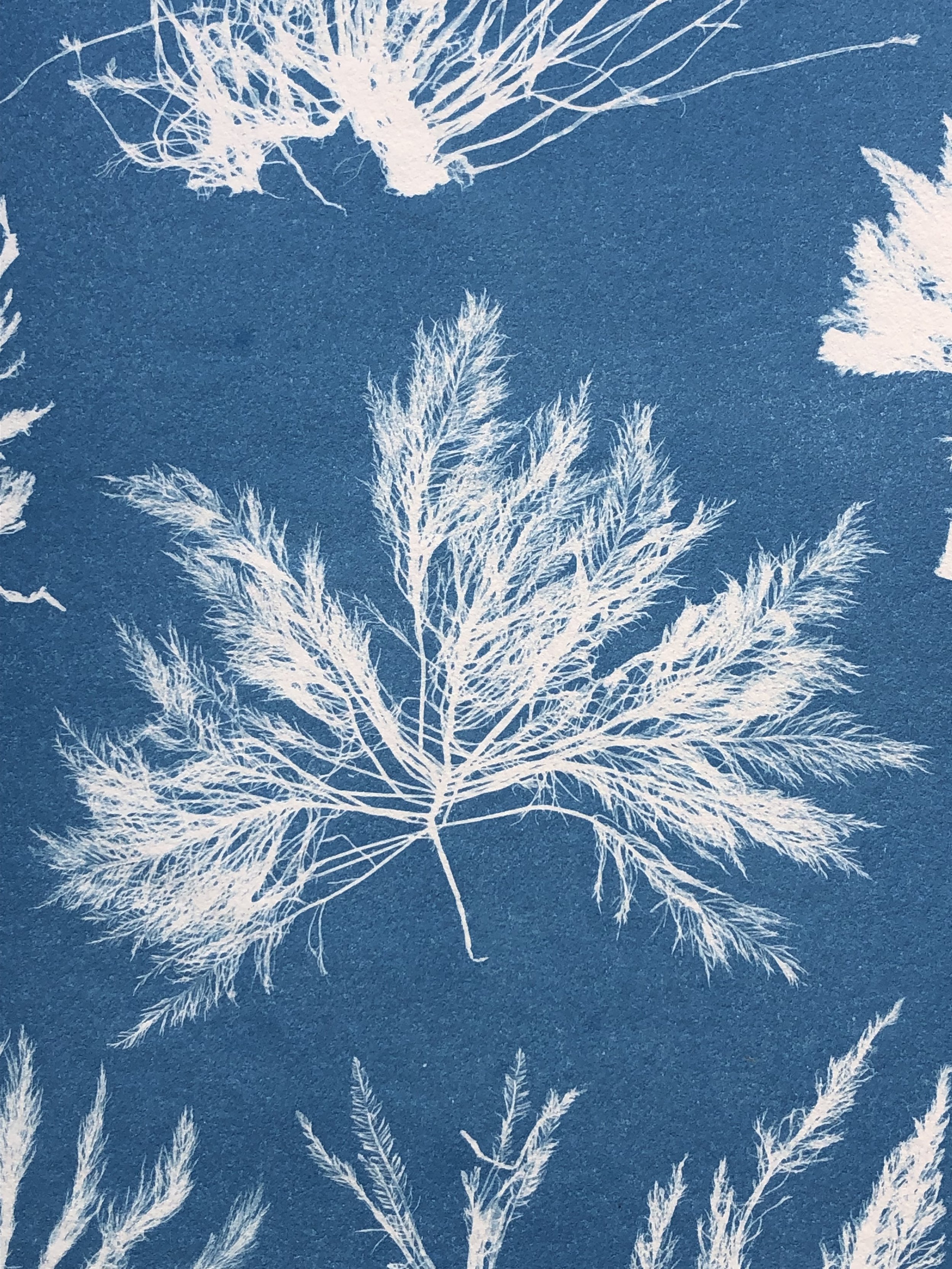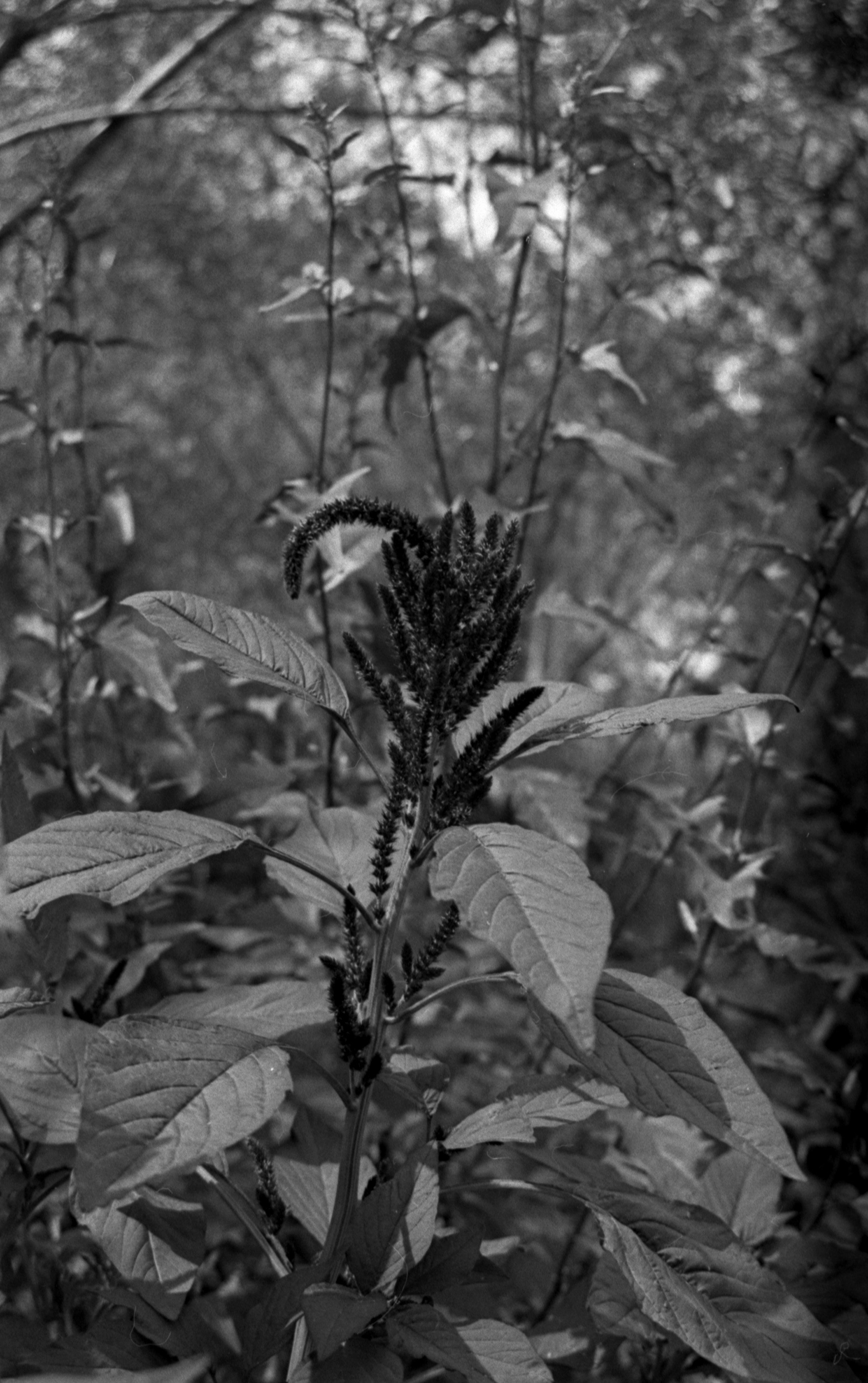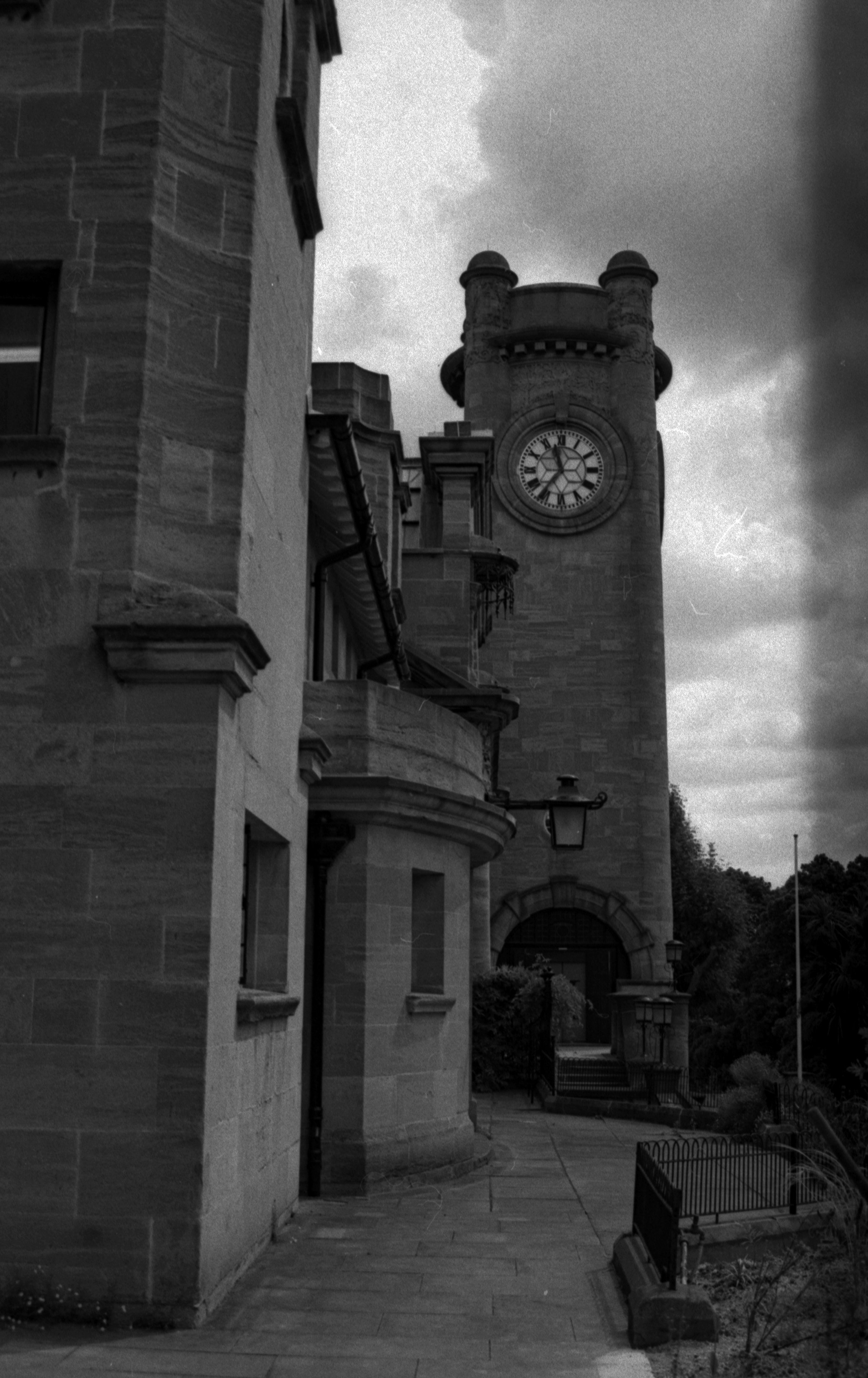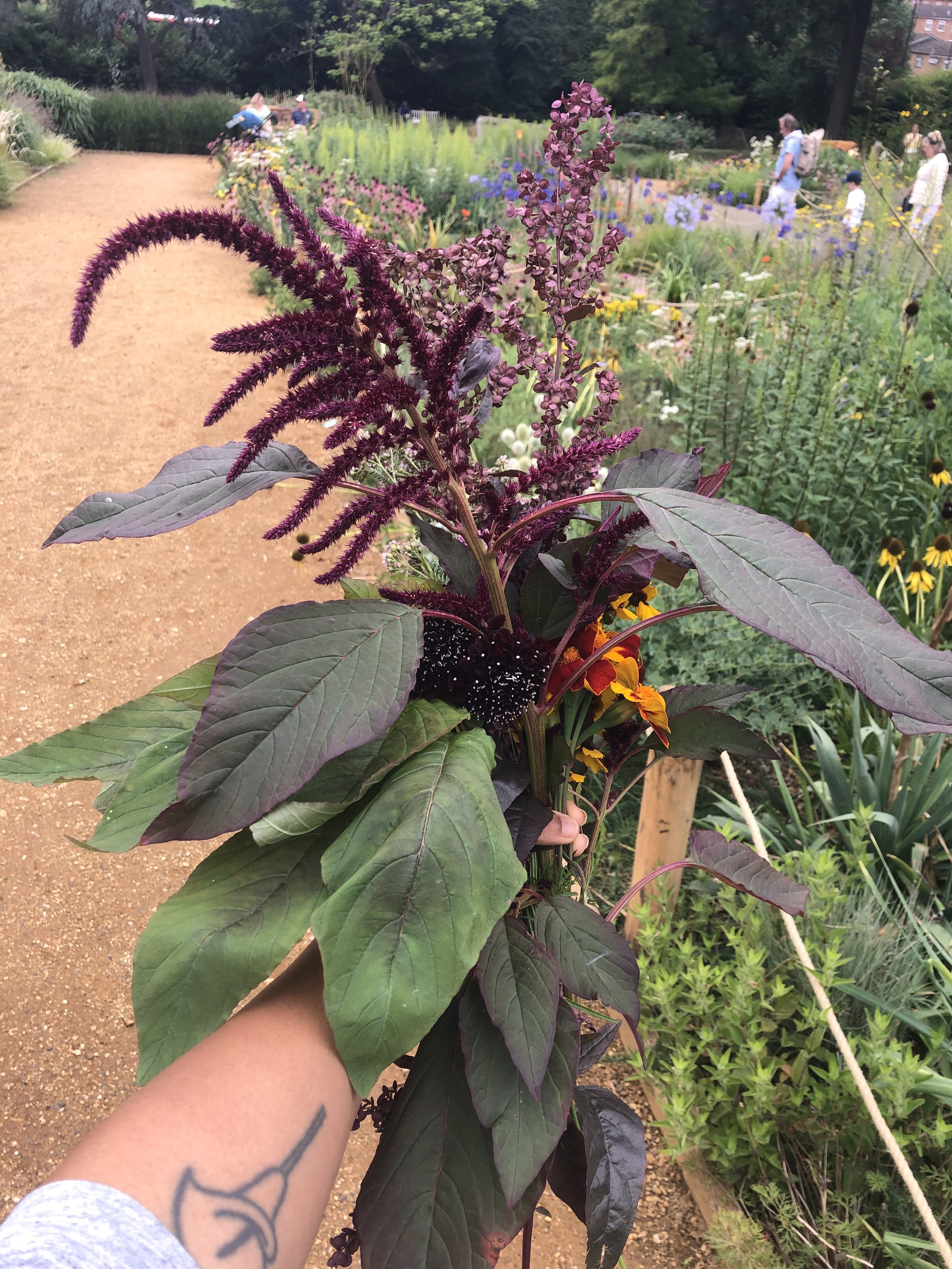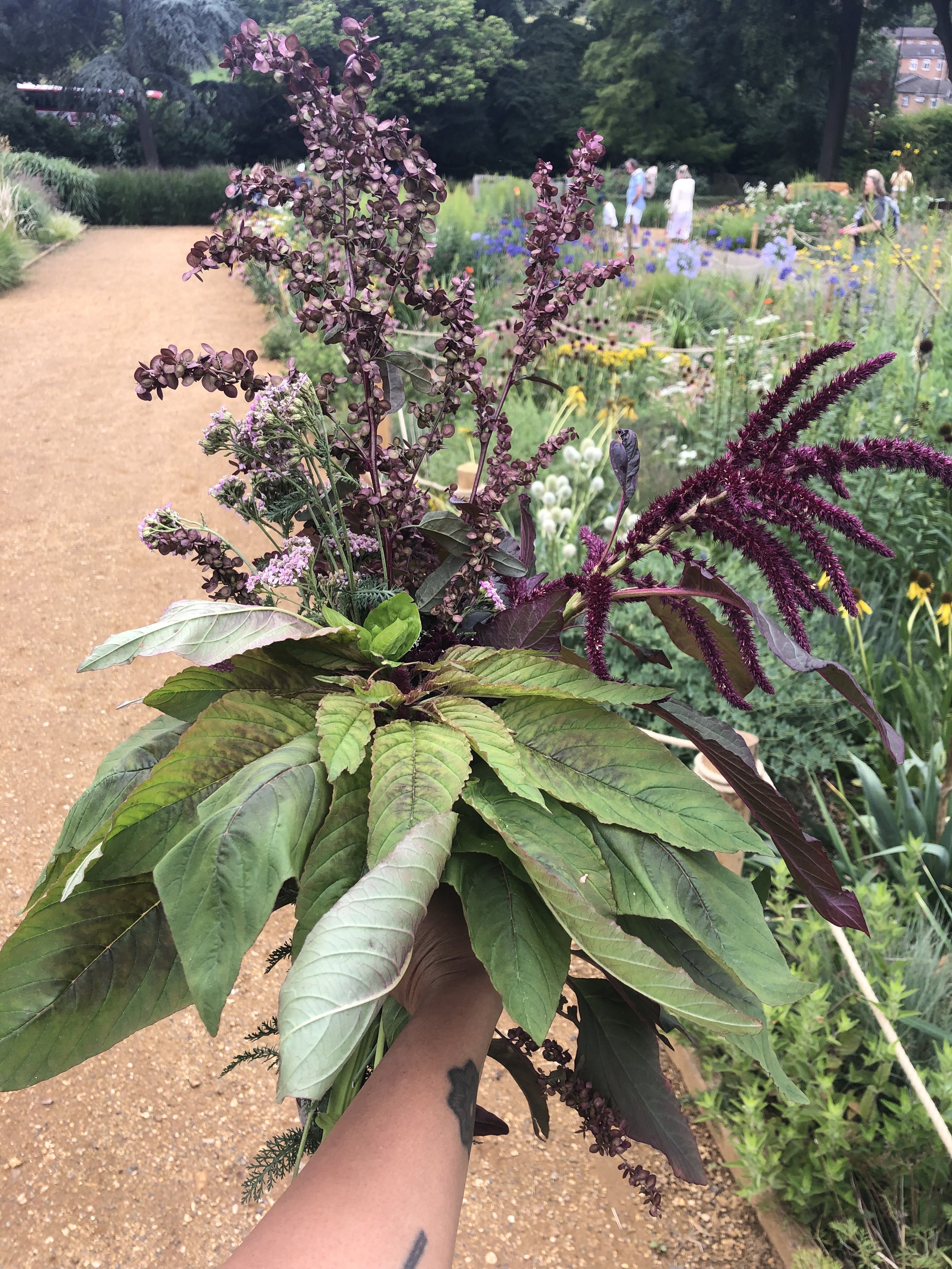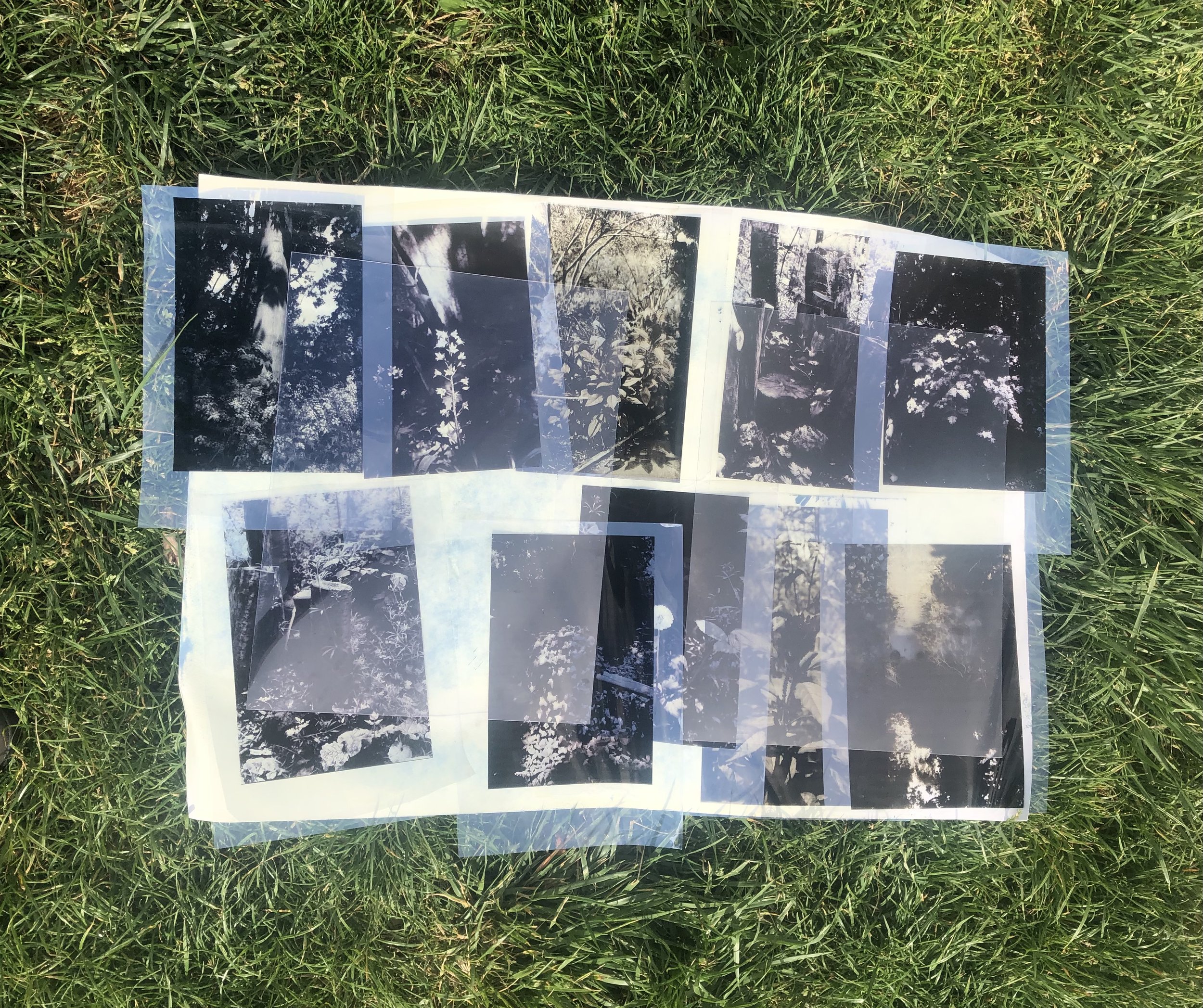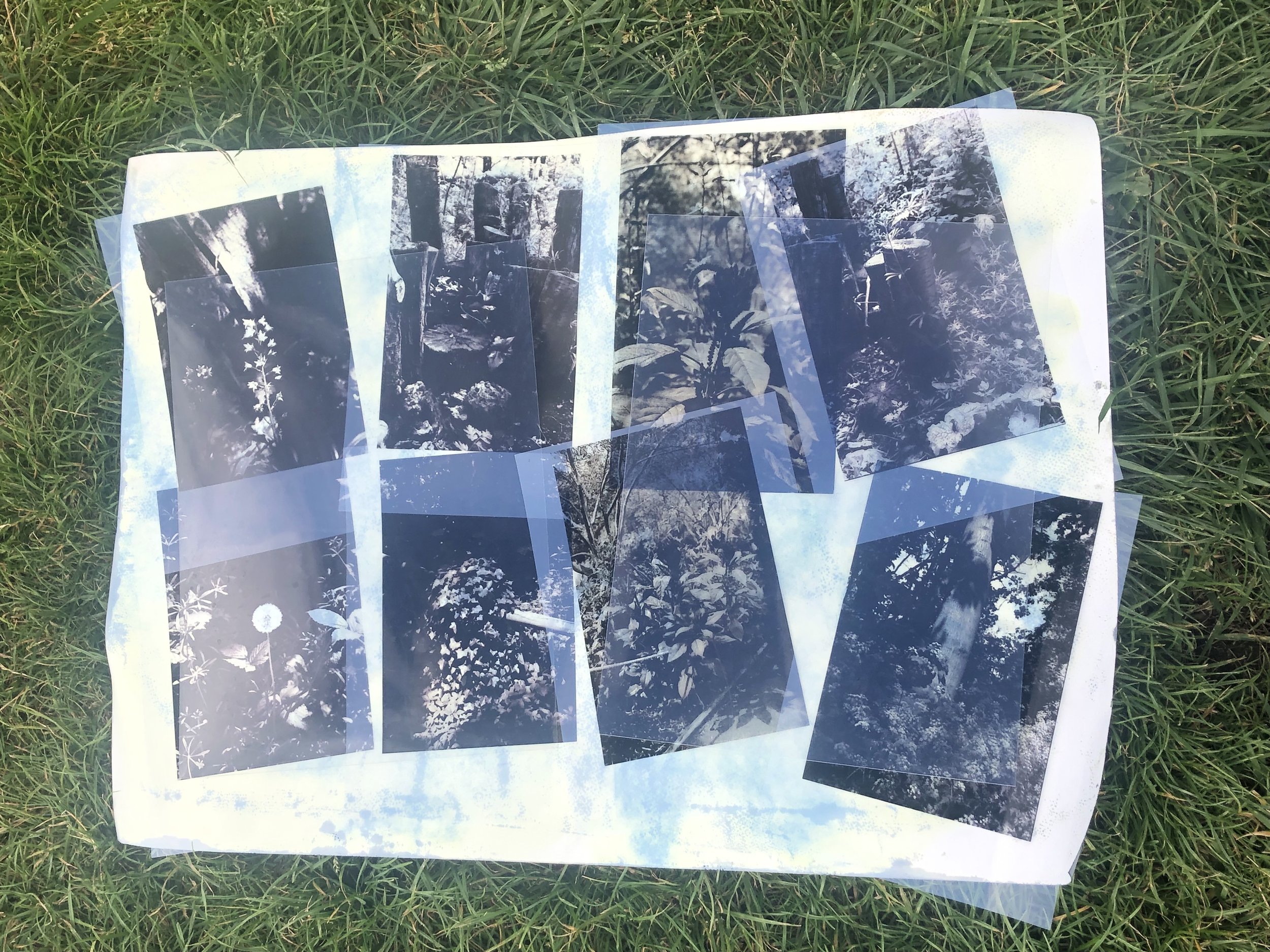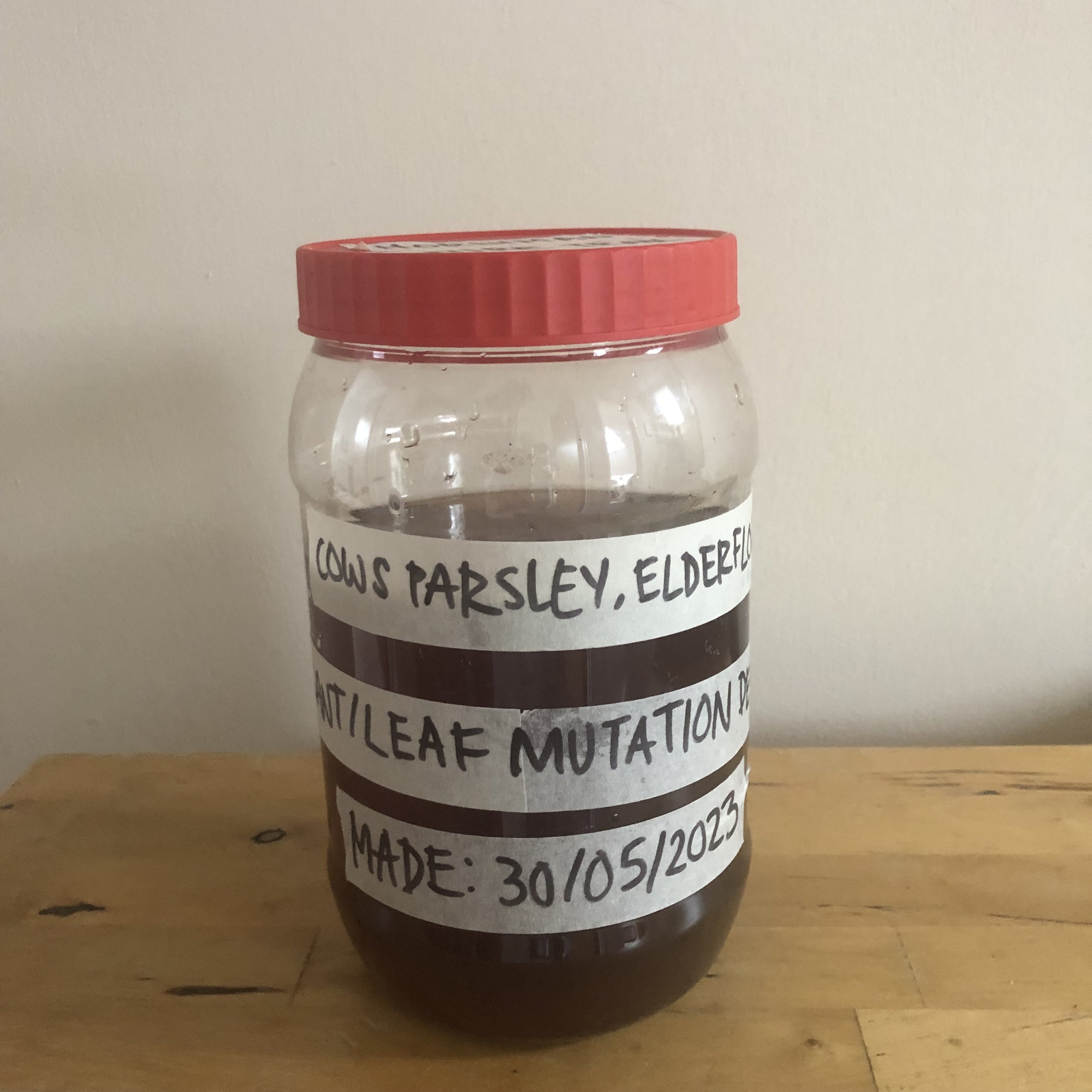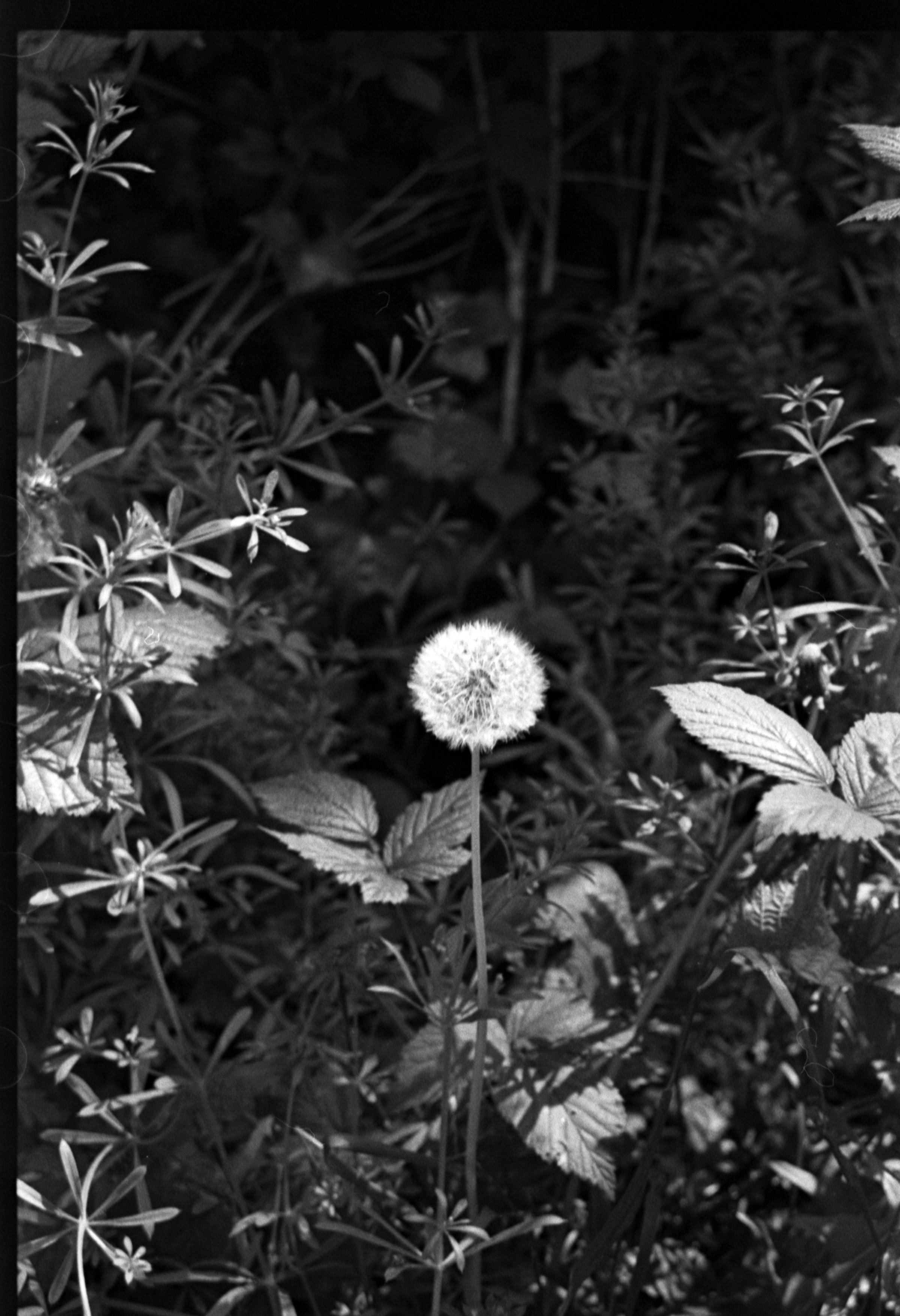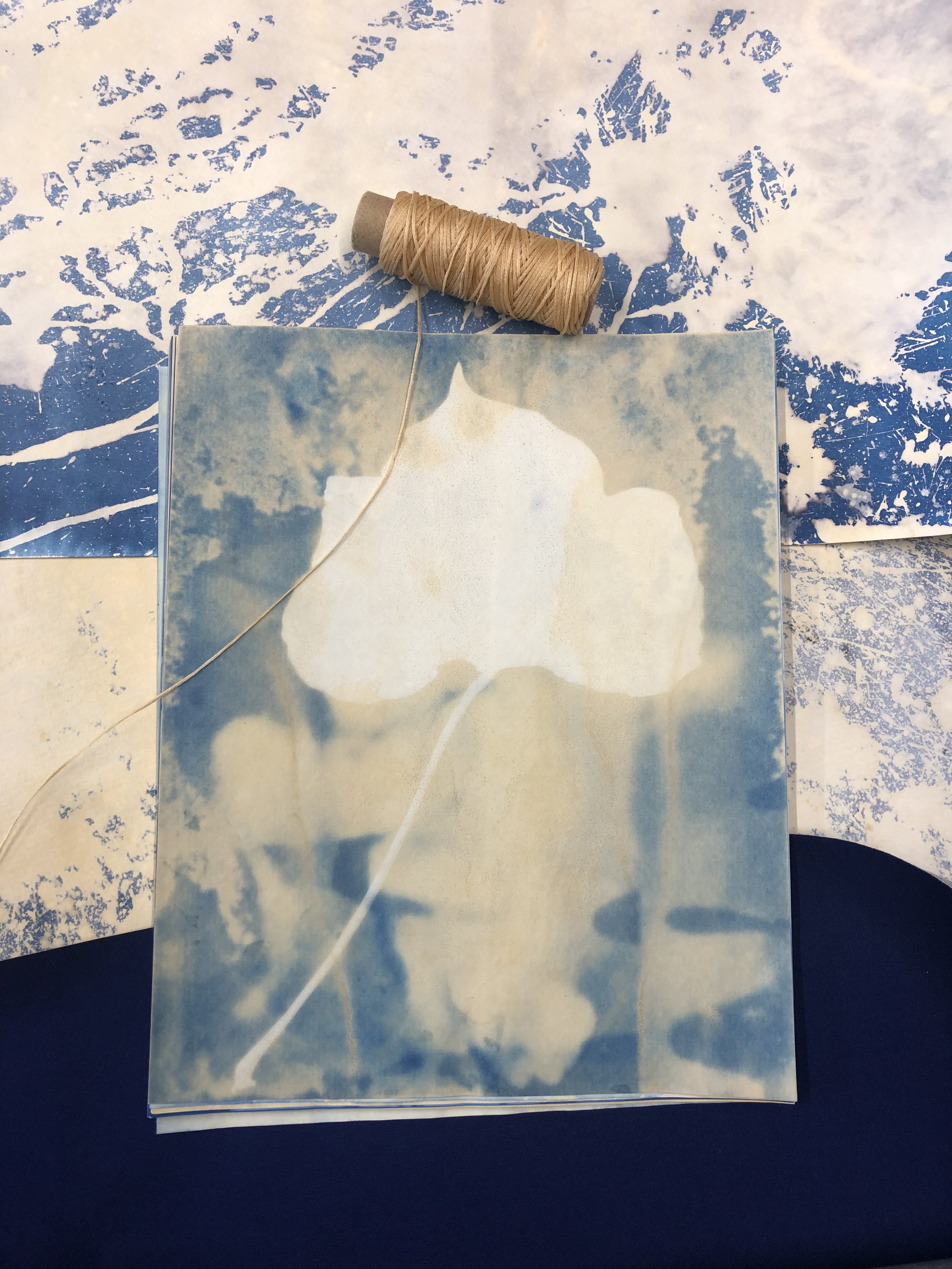PEOPLE
Photo collage with Bamboo paper of Horniman nature trail, May 2023 ©Marie Smith
Silkworms - A Timeline
Some initial threads regarding silk worms and how they have been part of the utilised in the ecology of the British landscape. This information was found via the Horniman Museum Natural History search engine where I typed the word ‘worms’ and ended up finding more than I anticipated. This information came from an article that was produced between 1888 to 1901 and resides in Horniman’s archive.
Here is a further link for your perusal: Natural History search engine
Silkworms’ origins: India, Japan, and China
B Mori silkworm - worms fed on Mulberry trees in China, became Domesticated silkworms. Also, known as Bombyx Mandarina (Bombyx Mori) they are part of the Bombycindare family.
Tusser silkworms - imported from India to the UK and grew well on evergreen Oak trees in the 19th century.
Other types of silkworms (not known or used in Europe):
Eri silkworm (can be wild and domesticated) - China
Ailanthus Silkworms - India
Mooga Silkworms from Assam - India
Some interesting facts and a lot of detail from a search where I found 2-3 articles and objects relating to the history of silkworms.
Some questions I would like to try and research:
Are there Evergreens oak trees at Horniman Museum that have facilitated the growth of silkworms?
Are there any trees in Horniman Gardens that are currently cultivating silkworms?
Are there other items that feature silkworms in the collection?
Screenshot of a ceremonial garland made from the cocoons of cultivated silk worms after the silk has been removed, and tinsel. Image taken from Horniman Natural History search engine, May 2023.
This photo shows how silkworm shells have been utilised as an object of beauty.
Once the silkworms have been used for their product - silk their shells have been kept and made into an object of beauty. I wonder what the meaning is behind this process, the ritual of collecting the shells and assembling them in this way.
I wonder what would have happened if the shells had been repurposed and composted back into the soil - if that was a viable choice or not? There is little information in terms of the metadata attached to this object and other objects that I have noticed in the search engine on Horniman website.
Dissecting the landscapes, can I arrogate my photos in the same manner that worms irrigate the land? What do I learn from this working methodology and how will that impact my outcomes with photography and collage for example.
Photo collage with Bamboo paper of Horniman nature trail, May 2023 ©Marie Smith
Experimenting with cyanotypes - bleaching and toning with peppermint tea
Bleached cyanotype - original scan, May 2023, ©Marie Smith
I feel like I have a complex relationship with cyanotypes, and I have written about this previously as part of my DYCP research back in 2021. Anna Atkins was a pioneer in her career as a photographic artist, my thoughts and feelings about her cannot be separated from her personal life.
Anna Atkins was married to John Pelly Atkins, the son of Alderman John Atkins - a West India merchant and slave owner of several plantations in Jamaica. Atkin’s family received compensation (at the expense of UK taxpayers a debt that was only paid off in 2015 along with other former slave owners) when slavery was legally abolished in 1807.
Atkins made a study of British and Jamaican ferns (only two exist) and one copy exists in Bradford at the National Science and Media Museum and, I am keen to see this study as it will bring some context to her research. As someone who is of Jamaican heritage, this book will also provide me with an understanding of the ecology and plant life of Jamaica in the 19th century.
Although I enjoyed the experience of looking through her cyanotype at Horniman Library (see recording below for my thoughts), the word ‘extraction’ kept playing through my mind. I am looking from a contemporary gaze, with hindsight I can provide a framing for engaging with her work in a way that perhaps she never contemplated.
I was aware that I was touching the same pages that she had once held and this conversation led me to think about how I could re-frame and recontextualize the cyanotype process.
For me bleaching and toning my cyanotypes is a way for me to process my feelings and interrupt Atkin’s work in a way that allows me to have agency. Also, bleaching and toning cyanotypes are popular in the alternative photography community for reasons that seem to be more aesthetic - to alter the rigidity of the cyan colour that the process generates. For me, it is more than altering the aesthetics of the cyanotypes, it’s a method and mode of commentary that still acknowledges the origins of the Atkins and cyanotype process but provides a vehicle for a nuanced approach to her legacy.
Bleached cyanotype - original scan - June 2023, ©Marie Smith
Visit to Horniman Library - Anna Atkins
Photo captured on iPhone of Anna Atkin’s book of British Algae, made in 1848 and bound as a book in 1880’s - currently held at Horniman Museum, May 2023, ©Marie Smith
Yesterday (16/05/2023) I spent three hours in conversation with the archive of Anna Atkin’s book on British Algae made in 1848. There are 14 copies that were made and each copy is nuanced as the owner of the cyanotype plates would have chosen how they were bound and the contents and order of the plates. The Horniman owns 4 copies of Atkin’s book of cyanotypes, Volume 1 - 4
As part of my processing, I recorded my thoughts, I utalised Tina Campt’s theory Listening to Images as part of my process, Campt’s theory has helped open my mind in terms of how I engage with art and archival materials, especially when I am situated within an institution.
Photo captured on iPhone of Anna Atkins book of British Algae, made in 1848 and bound as a book in 1880’s - currently held at Horniman Museum, May 2023, ©Marie Smith
Reflecting on my conversation with Axel, we discussed the technicalities of sound and how I wanted to utilise it in my research for my residency.
My explorations in sound recordings are new for me and I don’t have any resolved ideas or outcomes yet. However, I appreciate how direct I can be and how it makes it easier for me to translate my thoughts which helps with my neurodiversity (Dyspraxia).
During my archival visit to Anna Atkins cyanotypes, I recorded my thoughts which have since transcribed and extracted key thoughts, ideas, and concepts that I wish to translate to my cyanotype process.
Alongside, the text and bleaching of cyanotypes, I am developing a response to her processes and also responding directly to my concerns about her indirect links to slavery.
I am also reflecting on the concept of time - or duration which can be perceived as space and that space/time/duration from Atkin’s and her practice and the societal structures of the 19th century.
Bleached cyanotype (with text) of mutated leaf from Horniman Nature Trail - original scan, June 2023, ©Marie Smith
Bleached cyanotype of mutated leaf from Horniman Nature Trail - original scan, June 2023, ©Marie Smith
The process of bleaching the cyanotype is very physical, you can see the strong cyan blue drain away or change to purple/gold tone, reversing the process has given me agency and a methodology to create a conversation with Atkins.
Super 8 Film - A move to the performative
Performance in the Horniman Nature Trail, Super 8 - Kodak Tri-X, May 2023, ©Marie Smith
With support from Hollow Mountain Films
Assistant - Rosie Loizeau
This is my first attempt at using Super 8 film, I was able to visualise the concept that I had and was grateful for the help provided by Rosie who took direct well and was keen to engage with my concepts.
Sometimes a still image feels limited and it was helpful to explore the potential that moving image has to offer, I was also thinking of The Wanderer character and saws this as an extension and exploration of this facet of my research with this film. The Nature Trail has become a space that feels welcoming and I am not bored or under appreciative of the space. Again the gardens and museum are great but they feel cultivated in a way that seems like the antithesis of the nature trail which is ruminating an existing with little interruption.
I have one film left and I think I might try and film someone else in the space - nature trail and explore sound with it - perhaps an interview overlapped with moving image. Just an idea that came to mind, more tot come soon.
Threshold anxiety
Photo of Callaloo being grown in Horniman Gardens, developed with Elderflower & Vitamin C, July 2023 ©Marie Smith
On reflection I think I was suffering from threshold anxiety regarding the Horniman Gardens, this is an element that feels away from my everyday experience with nature. I have not live din many homes with a gardens, never had my own so i’ve not idea what to do with them.
Partly that’s why I think the Nature Trail was appealing to me, its ruggedness felt familiar and I felt that I didn’t need to know too much in order to feel an attachment to the space.
I think that’s why I’ve not been able to engage with the Horniman Gardens, everything looks and feels ornamental to me. I felt that I was unaware of the rules and rituals of what I was seeing, I was unsure how to feel and I was not even sure what I was looking at. I felt blind and quite ignorant (unintentionally to was what around me.
I was not aware until I met Errol Fernandes who’s the Head of Horticultural department at Horniman Gardens that Callaloo grew in abundance in the garden. Callaloo is resilient, and drops a seed and grows in autumn/winter. It was planted in the Sunken Gardens as part of black music festival - 696 Music of Black Origin. Callaloo is one of the national dishes of Jamaica and I am only familiar with it as canned food. It flowers are a hazy rich purple and it’s leaf resemble spinach but seem more hardy and dense.
My meeting with Errol was fruitful and gave me some context to the gardens at Horniman. The Horniman has 40 volunteers that help maintain and nourish the gardens.
Speaking to Errol was insightful and I saw a resemblance between what Eroll was doing to what I was doing, he has a varied background from working in the arts to overseeing the growth and development of the gardens, all of his varied career has fed into a open-mindedness and consideration that ripples through the garden.
Horniman Museum, July 2023, developed with Elderflower and Vitamin C developer, ©Marie Smith
Always trying to create context with the collection, the gardens are in dialogue with collection, Horniman’s (who made his trade in tea) ambitious was the bring the world to Forest Hill and this was echoed through to the gardens and not just with the objects in the collection. Again, thoughts of extraction and the legacy of colonialism come to mind as it did when I was looking at Anna Atkins book of British Algae.
I spoke to Errol about the bleaching process I have been undertaken with my cyanotypes as a commentary on Atkins and her legacy, he comments that bleaching is also part of his world. Some people bleach their plants and flowers to alter the aesthetics, structures and forms (using household bleach). I was quite shocked to hear this that certain people would go to such length to morph and manipulate a plant/flowers aesthetics with no consideration with the effects it has on the plant/flowers.
It spoke to me of colonialism - bleaching. Alongside that men like Horniman would extract and rename plants, disregarding the indigenous heritage and origins. Renaming and re-appropriation. We also spoke of the importance of language and how plants are referred - alien, non-native, and native plants, echoing there language that is used to describe Asylum Seekers that come to UK and how they are made to be seen as illegitimate and a threat.
Photo me me holding a selection of plant and flower cuttings from Ellen O’Connell at Horniman Gardens, August 2023, ©Marie Smith. Plants shown here are: Atriplex Hortensis, Amaranth, Tageteres Erecta, and Scabiosa atropurpurea.
The garden at the front of Horniman has been planted behind the sandstone building which acts as a radiator that benefits the plants, the plants are from across the world such as Mexico, Ethiopia, Australia, and British, New Zealand etc. This collection has been planted in free draining soil. Made to reflect the future with effects of climate change on what plants can sustain the change of temperature.
Digging is an active intervention destroys the soil.
There are some issues and I was glad to hear more about the soil health of the gardens, I have been thinking that I had neglected this element of my research or had found it difficult to contextualise this with my research. The soil in The Sunken Gardens needs rest and restoration, a low intervention methodology has been used to help counter the imbalance of microbiology and pathogens and bacteria in the soil.
Constant rotation of soil is damaging and having flowers and plants that rebalance the soil is a consideration that made me feel that its not just people that need healing, soil needs healing and contents extraction and rotation of the soil not only take up a lot of time and resources but mincing the soil removes the bedding material, damaging the macro biology (worms for example). This causes plant disease, and creates an hostile environment for plants to survive.
This regenerative low maintenance has also been applied to the meadows, the high grass is a nicer experience, again low intervention and allows you to have a more direct experience with nature.
Disconnection.
This has been combatted with talking to Errol, it’s been helpful to learn and make a connection to the Horniman collection to the gardens. I feel more settled now in this space and I think without this meeting I might have still had an element of anxiety with the gardens. I am hoping to obtain some plants from The Sunken Gardens to aide my research.
Photo of plant cuttings located within the Sunken Garden at Horniman Gardens, August 2023 ©Marie Smith. Plants shown here are: Atriplex Hortensis, Amaranth, Achillea millefolium.
Extraction - Work In Progress
Photo of making a large scale cyanotype, August 2023 ©Marie Smith
Photo of making a large scale cyanotype, August 2023 ©Marie Smith
Photo of bleached large scale cyanotype, August 2023 ©Marie Smith
Photo of bleached large scale cyanotype, August 2023 ©Marie Smith
Final reflections
I came to the Digital Residency with a thread of an idea that I was excited to have the time and potential to explore. I was interested in worms and soil, an area that I seldom reflected upon, in particular its importance to the ecology of life. Until now I had been blind to this element. In fact, many people suffer from plant blindness, perhaps this has come from modernisation, a focus on consumerism or objectifying nature and not recognising its agency and subjectivity.
I started my residency at the end of April, when the sun shone, and I was able to track the growth and development of the Horniman’s Gardens and Nature Trail. I grew attached to the Nature Trail and its abundance of foliage of ecology, I spent some time walking up and down documenting the surroundings as I started to become familiar with the landscape. This also allowed me to process my thoughts and to try and find a narrative that I could build upon. Time spent there gave me an objective distance to stand still and observe what was around me, I brought myself into the institution from the outside and this allowed me to build up my confidence and understanding of the institution.
I also learnt about the things that I took for granted and had never considered, such as grass lawns. Perhaps this is a constraversal perspective for some, but grass lawn has a colonial legacy and was constructed as an act of classism. A way to demonstrate your wealth and to subjugate nature, this way of chastising nature was exported the British colonies and can still be reflected in the domesticated homes of Australia, Canada, and South Africa for example. Who gets to decide what a weed is? What is a ‘native’ plant? Language is important and can define how we engage with it - with climate change and with nature, with soil erosion, society must start to become accountable and start to reframe who & what is deemed to be native.
This is also ironic to me as it can be argued that there is nothing in Horniman’s collection and gardens that is native to South London. I am ending this residency with a stronger affinity to the Horniman Museum’s and Garden, and a new focus for my practice.
Now that the residency has finished and I feel that I have come away with a better understanding of myself and my practice. The lack of emphasis on an outcome and having a supportive network of people at the Horniman was a great boost to my confidence. Exploring different mediums such as audio and Super 8 film was exciting and I would like to see how I can incorporate these elements more into my practice.
My thoughts have become more concise, in terms of how I would describe my practice which has been shifting but I was not able until recently to understand what that shift was and what the impact would be on me and my ways of seeing. I want to explore the relationship between the body and institutional landscapes - these landscapes could be based in nature or within an institution such as museum or gallery. Both spacers have shaped my sense of self and I have been trying to articulate this idea for a while and I am happy that I was able to do this during my residency at Horniman Museum and Gardens.
Photo of cyanotype background, September 2023 ©Marie Smith
WORMING
Photo taken on a walk through Horniman nature trail, April 2023 ©Marie Smith
These initial photos were taken from a walk on Horniman’s nature trail in April 2023.
The photo was developed using a low toxic developer that was made from Rosemary & Thyme. I had foraged for the materials from a previous residency at Joya:Air in Spain in January 2023.
Photo taken on a walk through Horniman nature trail, April 2023 ©Marie Smith
Evading the sun, most worms rise at night: small, double-sexed soil gods who turn the earth, eyeless and unguarded bare-flesh being whose faces read the light. They breathe through their skin and must live shrouded in moisture to keep kissing oxygen from soil and air alike.
Place worms into a jar of carefully layered soils, sands, and leaves, and you will see them weave the firm bands into complex plaid, felting the boundaries, mussing the borders. As worms move, they spin space into solid ground. Their trails aerate the earth - offering air, water, and nutrients passage, deeper reach toward plants’ roots.
Worms help the rains drain safely, and all burrowing beings restructure the soil, helping the earth and the others it holds to breathe, eat and drink.
Extract from Undergoings by Fiona Glen, from the publication Subterrane, the story was published by Pala Press, 2023
Self portrait taken on a walk through Horniman nature trail, April 2023 ©Marie Smith
As part of my research, I will be collaborating with different practitioners who help me expand my areas of interest. I have a tendency to be quite rigid in my thought patterns, I usually have a plan of action and I find satisfaction and structure in that way of working.
However, I know that this can also be limiting, so I have asked Angela YT Chan and Axel Kacoutié to work with me.
Angela’s approach like mine is multi-disciplinary and Angela has utilised the structure of earthworms to facilitate her curatorial projects. During our session, we discussed the flexibility of earthworms and the research that I had made on Horniman Musuem’s Natural History search engine where I found some information about silkworms from India and China and how they were utalised as a form of trade to the UK.
What I also find interesting about worms and utalising them as a metaphor for my research is how they are essential workers that cultivate the land, this facilitates aspects of our life such as food production (or silk - regarding silkworms), essential goods that would render our lives difficult if they were not present and doing their utmost to nature the land.
Their role is underestimated, and unseen, and due to their physical appearance, they are seen as unsightly, ugly, and weird. They are also vulnerable to a lack of defense mechanisms and are often seen as food for birds and other animals. Their life span is short - a maximum of 1 to 2 years depending on the quality of the soil they reside in. I wonder if they have a preference for compost over gardens or forests.
Their invisible labour is not glamorous and is beneficial to the ecology, they move slowly, and methodology processing and irrigating the land. The slowness of their approach is also something that I would like to incorporate in terms of being reflective and reactive.
Earthworms have the capacity to stay alive even if they are harmed as they can re-grow themselves so there is an element of a continuation of life, although their life span is short, they have seemed to have evolved to maximise their time.
Worms make me reflect on extraction, as I have stated before, we are restricted by the binaries of capitalism, and climate change, and the dismantling of the land for profit is something that impacts the ecology of the land/soil and worms.
I would like to have a duality to my research where I think about the physical existence of worms and their role as well as incorporate their methodology into my way of seeing during this residency.
Photo taken on a walk through Horniman nature trail, April 2023 ©Marie Smith
What would it mean to ‘worm’ in a human way - to embrace the idea of sensing things in closer contact, making space to move forward not by pushing away but by taking in our environment?
Extract from Undergoings by Fiona Glen, from the publication Subterrane, the story was published by Pala Press, 2023
How to describe my process with cyanotypes:
Dissecting
Altering
Destroying
Reframing
Reimagining
Reconstructing
Re-engaging
Removing
Fracturing
Fragmenting
Repurposing
Contextualising
Recontextualising
Time
Creating my own process of engagement
Perfectionism
Responding
Bleached cyanotype - original scan, May 2023, ©Marie Smith
Bleached and toned (with peppermint tea) cyanotype - original scan, May 2023, ©Marie Smith
Photo captured on iPhone_Horniman Nature Trail, May 2023 ©Marie Smith
Notes from a catch-up with Chris from Horniman - Nature Trail walk (16/05/2023)
What I learned and what I saw on my walk
Hawthorns
Cows Parsley
Cherry Tree
Forget me not flowers
Herb Robert
White Dead Nettle
Aconite Flower
Flowers and insects - have a relationship separate from humans
Sticky Willy
Sticky Vine
Ivy
Elderberry Tree
Oaktree
Bramble
Spanish Bluebells - not native to the UK
Field Maple tree - from sycamore flowering trees/pollinating
Buttercups
Willow Tree
Ragwort
Thistles
Grass - succession plants - take the nutrients out of the soil
Dandelions
Who gets to decide what’s a wildflower or a weed? Language is important
Horniman Museum nature trail is part of the historic woodlands called the Great North wood
The grass lawn - think of the garden, recontextualize the lawn/grass as an act of classism and colonialism - look at how it has been exported to colonies (thinking South Africa, Canada, and Australia for example).
Things that I need to explore as part of my research (book mark for future):
Social Ecology
Mycelium network - connected by fugal thread or hyphae. Grown underground and tend to thrive in rotten trees for example.
Plant blindness
Domesticated plant life and flowers - thinking of Tulips for example 🌷
Photo captured on iPhone_Horniman Nature Trail, May 2023 ©Marie Smith
I have come across these mutations in nature before, an intriguing and beautiful oddity that demonstrates nature claiming and reimagining itself, the red colour might not go on to dominate the entire weed/flower/plant, this is dependant on what nature decides to do.
Photo of foraged plants (mutated leafs, elderflower, cows parsley and butternut flower) from Horniman Nature Trail ©Marie Smith, May 2023
As an experiment, I foraged these specify and have used them to make a developer - alongside Elderflower, Buttercup Flowers, and Cows Parley. I’m excited and also nervous to see how it works for me.
Photo of home made low-toxic developer, photos by ©Marie Smith, May 2023
Emergence Magazine
Our podcast features exclusive interviews, author-narrated essays, fiction, multipart series, and more. We feature new podcast episodes weekly on Tuesdays.
I would recommend Dwelling on Earth by Jay Griffiths. A very insightful podcast that is written in there form of a love letter to soil. Griffiths offers an informative gaze of the degradation of soil, its capacity to sustain life.
Some scary reflections feature in podcast which contextualises the severity of soil erosion and the neglect it has received.
Dandelion (Taraxacum official)
A short history of the Wish Plant
Photo of Dandelion taken on a walk through Horniman nature trail, May 2023 ©Marie Smith
The Dandelion flower is also known as Wish Plant and exists on every continent except Antarctica.
Every element of the flower is edible including the root and leaves.
The Dandelion was used to make latex during WW2 by the British Government.
Until about 1914, and in times of shortage since dandelion’s roasted roots made a coffee.
Dandelion wine was famous; in Cambridgeshire, its quality was said to be superior when it was made from flowers gathered on May Day.
Dandelions give off ethylene gas, which ripens fruit, and fruit farmers have been known to encourage a handsome crop of dandelions beneath their orchard trees.
The dandelion is notorious for its diuretic qualities. If children sniffed the flowers on May Day they would cease bedwetting for a year.
But a dandelion tisane has such inevitable effect that in many English counties the flower is called ‘piss-a-bed’ and in France pissen-lit.
Extract from Discovering The Folklore of Plants by Margaret Baker, published by Shire Classics, Oxford, 2008
Cyanotype of Dandelion from Horniman Nature Trail, June 2023, ©Marie Smith
Soilscapes: Horniman Museum and Gardens
Screenshot shoes a bit of research that I have started to look into the soil composition of the area, I have also been reading Unearthed by Claire Ratinon. Her lived experience as a person of colour from the diaspora who had been previously dissociated and isolated from nature felt similar to my experience and the journey I am currently on in my life and also in my practice.
I am also intrigued by the underlinings of the soil and the implications this has on our health and wellbeing, especially after listening to the podcast Dwelling on Earth by Jay Griffiths.
A neglected source of what makes up the foundations of what we call nature, I am hoping to spend the last few months reconciling this element as part of my research. I am not sure if this is a correct assumption but I feel that soil - has been exploited and eroded to degrees that is not obvious from just looking or touching it.
This map from Soilscapes has told me that the soil in the area is: Slowly permeable seasonally wet slightly acid but base-rich loamy and clayey soils. The texture is Loamy and clayey.
I’m intrigued by these small facts and feel that slowly I am becoming more accustomed to the gardens and the locality of Horniman.
Cyanotype of the Horniman Nature Trail, July 2023, ©Marie Smith
Call and Response / In conversation
This residency feels like a call and response or perhaps I am in conversation, worming through the collection aerating different channels for others to explore, extracting history and reflecting on legacies - whether that be Horniman’s or Anna Atkins.
There is so much to explore and this residency is starting to feel more like a new chapter in my practice rather than a one off event that I am responding to. I will be seeking further channels of investigation and conceptually I am seeing my practice reflect more on ecology and the environment now that I have the language and a better understanding of what it means to engage and talk about ‘nature’.
My time here has felt like a call and response and to see how the organisations functions has been important part of me understanding how I can see myself within the context of this institution, I have found spaces such as the nature trail to have a focal pint, a place of reflection to acknowledge and ascertain what it means to be a body - in - space.
The processing of making the cyanotypes have questioned the materiality of camera less photography, especially the bleaching process, draining away the element that defy’s the aesthetic and beauty seems like an act of sabotage, rather than a way of creating agency. This process is me having a conversation with Anna Atkins within the context of our photographic practice.
There are some reflections that I indent to explore more, especially in winder when I feel less productive and more reflective. I will be aiming to gain some further insight on the relationship between the plants/flower that I use my cyanotype to see how I can integrate the final outcomes beyond an object - to be seen and admired.
Experimenting with the cyanotypes, allowing sampling and plants to grown from them (if I make them into plant pots for example). Examining the toxicity of being a photographer and perhaps reflecting moron the implications of my practice will provoke different methodologies and thinking. These conversation about process - outcome - object cam from my second conversation with Angel YT Chan who has been a great source of inspiration and reflection during these past few months.
What would happen if I thought of my practice within a natural cycle and I return my work to the earth? Instead of being fixed on an outcome that could be monetarised for example?
Photo of the Dye Garden located within the Sunken Garden at Horniman Gardens, August 2023 ©Marie Smith
I also met with Ellen O’Connell who works in the Horticultural Team at Horniman Gardens, she talked to me about the plants in the Dye Gardens and was generous to give me a selection of cuttings which I will use to make a dye from.
I have not done this before so this will be a leap into the unknown as well as a exciting way to experiment with a different process that could aide my understanding of nature and how to utilise these materials in my practice. I will have to show the same level of awareness regarding sustainability as I do with my photography practice.
Extraction - Photo Book
Photo of elements of my photo-book of cyanotypes, September 2023 ©Marie Smith
Photo of elements of my photo-book of cyanotypes, September 2023 ©Marie Smith
Photo of elements of my photo-book of cyanotypes, September 2023 ©Marie Smith
Photo of elements of my photo-book of cyanotypes, September 2023 ©Marie Smith
I started the residency with no idea off what I was going to do, I have immersed myself in making cyanotypes and felt a stringer kinship with the process, I have found the process of bleaching the cyanotypes with Sodium Carbonate to be satirising and a way for to have agency and to think about the materiality of the process and outcomes of the cyanotypes I made. I have made 33 cyanotypes that will be bound and boxed in a Sinclair context to Anna Atkins book of cyanotypes that live in the archive at Horniman.
The book will have a contemporary context with a formal introduction and I have opted for a historical font to match the tone of Atkin’s book. I have worked with Folium in South London who will be binding the book. They have been great in helping me with the design and being receptive to the nuances of the book. I am also excited to see this idea come into fruition.
Photo of cyanotype background, September 2023 ©Marie Smith
Bleached cyanotype of a leaf from Horniman Nature Trail, September 2023, ©Marie Smith






